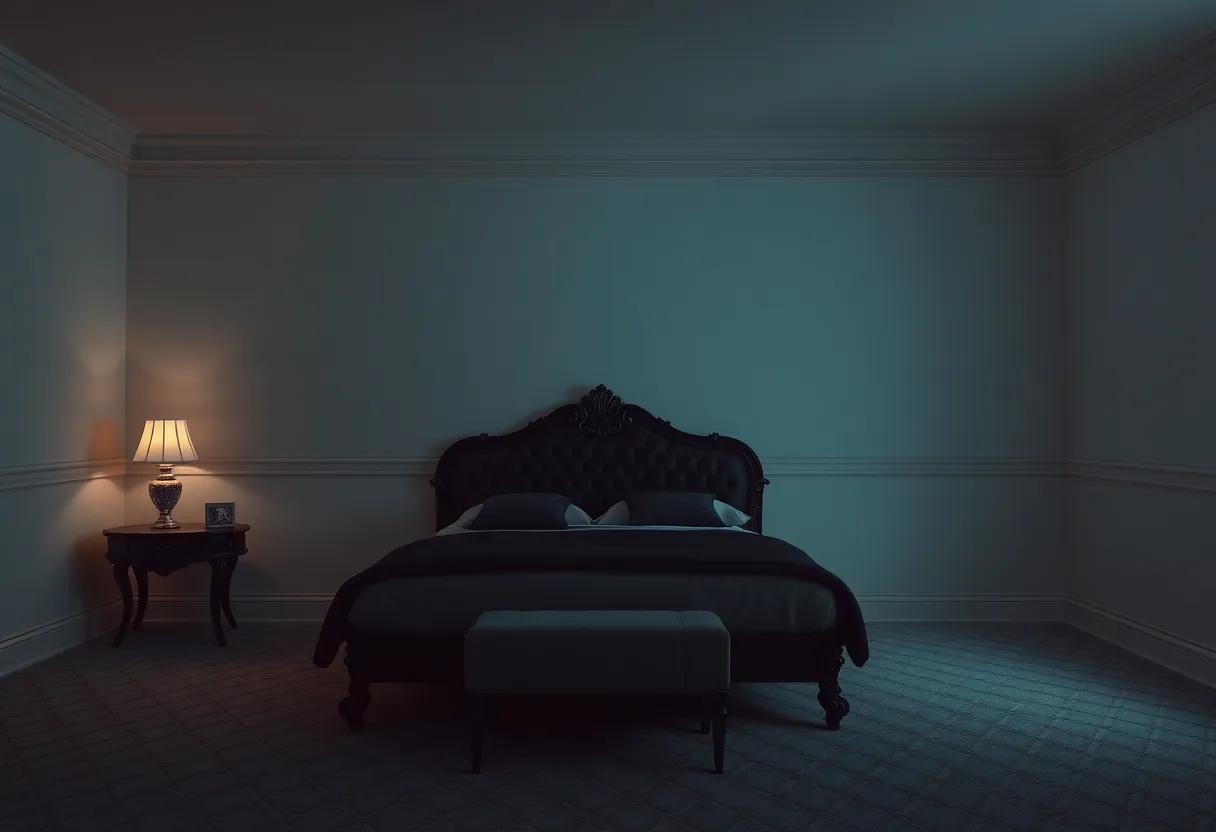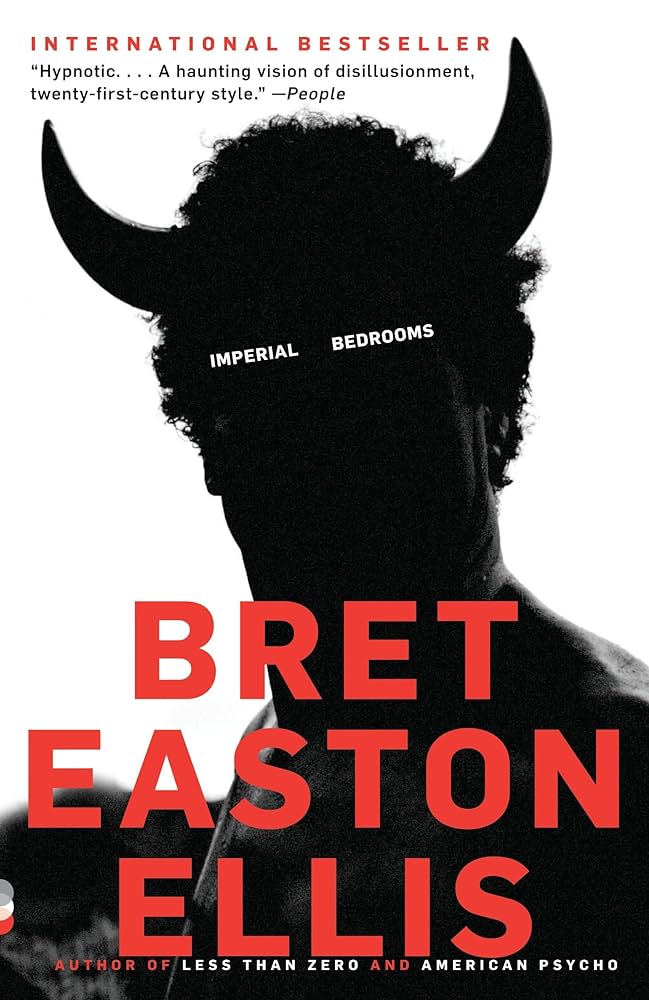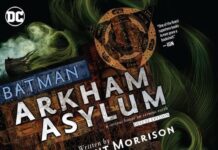In the realm of literary sequels, few ventures carry the weight of revisiting a world as enigmatic and unsettling as that of Bret Easton Ellis’s Imperial bedrooms. emerging decades after the cult classic Less Than Zero, this novel invites readers back into a neon-lit Los Angeles where glamour and moral decay intertwine with haunting familiarity. Revisiting Darkness offers a thoughtful exploration of Ellis’s continuation-examining how the author reclaims and reframes his earlier narrative through a lens matured by time, experiance, and an unflinching gaze into the complexities of identity and desire. This review delves into the layers of Imperial Bedrooms, unpacking its stylistic echoes and thematic evolution without veering into reverence or dismissal, aiming rather to illuminate the shadows Ellis casts in this provocative literary return.
Exploring the Complex Layers of Imperial Bedrooms and Its reflection on Modern celebrity Culture

Bret Easton Ellis’s Imperial Bedrooms peels back the facade of superficial glamour to reveal a sprawling network of moral ambiguity and emotional vacuity that mirrors the labyrinthine world of modern celebrity culture. The narrative plunges into the underbelly of Los Angeles, portraying characters whose lives orbit around fame, power, and manipulation, underscoring an unsettling truth: beneath the polished surface of stardom lies a complex web of disillusionment and fractured identities. The novel’s multi-layered storytelling evokes a chilling sense of detachment, reflecting the alienation that often accompanies today’s social media-driven fame economy.
Key thematic elements serve as a prism through which the novel critiques contemporary celebrity, such as:
- Performative Identity: where authenticity erodes under public scrutiny, creating characters trapped between persona and self.
- The Commodification of Pain: showing how personal trauma becomes fodder for public consumption and celebrity mystique.
- Ephemeral Connections: highlighting transient relationships that echo the surface-level interactions prevalent in fame-driven lifestyles.
| Element | Reflection in Modern Celebrity Culture |
|---|---|
| Identity | Blurred lines between true self and crafted public image |
| privacy | Continuous invasion via paparazzi and social platforms |
| Relations | fragmented due to fame-related suspicion and loneliness |
How Bret Easton ellis Revisits His Earlier Work with a Darker, More Mature Perspective in Imperial Bedrooms

In imperial Bedrooms, Bret Easton Ellis steps back into the world he originally painted in Less Than Zero, but with a lens sharpened by time and experience.The once-glossy veneer of Los Angeles’ young, wealthy elite now feels cracked, revealing a more disturbing and nuanced portrait underneath. Ellis doesn’t just revisit familiar characters; he reconstructs them as embodiments of disillusionment and moral decay. The narrative’s tone shifts from detached observation to a more introspective,darker exploration of identity,power,and the corrosive effects of fame and privilege. This tonal evolution offers readers a deeply mature and unsettling examination of the consequences that the characters,and by extension society,face as their superficial lives unravel.
What makes this revisit compelling is Ellis’s masterful interplay of past and present, weaving nostalgia with cynicism.The novel offers a stark reflection on how time alters perception and reality, where innocence has long since vanished, replaced by a pervasive emptiness. Key themes include:
- The erosion of youth and beauty as symbols of false hope.
- The corrosive nature of hollywood’s glitz masking deep personal failures.
- The complexities of memory – how characters grapple with their own versions of the past.
| Element | Les Than Zero (1985) | Imperial Bedrooms (2010) |
|---|---|---|
| Tone | Detached, minimalistic | Darker, introspective |
| Perspective | Youthful alienation | Adult disillusionment |
| Setting | Superficial glamour | Underlying decay |
Character Development and Emotional Depth That Challenge Readers’ Expectations in Imperial Bedrooms

Ellis masterfully subverts the archetypes established in Less Than Zero, allowing his characters to evolve in unexpected ways that disrupt the reader’s preconceived notions. This evolution is not merely surface-level; it delves into profound emotional landscapes, exposing vulnerabilities where once there was detachment. Characters who were once emblematic of nihilistic aloofness now grapple with regret, identity, and the heavy weight of consequences. The complexity of their psychological transformation invites a deeper engagement,challenging readers to reassess their judgments and empathize with the multifaceted nature of human flaws.
In embracing a darker yet more introspective narrative, Ellis uses subtle storytelling techniques that emphasize emotional nuance.Through fragmented dialogues, introspective monologues, and terse but powerful interactions, the novel breathes life into the shadows of its characters’ minds. Consider the contrast in pivotal moments:
| Previous Persona | Evolution in Imperial Bedrooms |
|---|---|
| Detached partygoer | Haunted introspective |
| Emotionally numb | Confronted emotional trauma |
| Superficial relationships | Search for redemption and understanding |
- Inner conflict becomes a driving force rather than a backdrop.
- Characters wrestle with moral ambiguity in ways that are raw and unfiltered.
- Emotional revelations emerge in moments that feel both intimate and unsettling.
The Role of Setting and Atmosphere in Creating a Tense, Uneasy Mood Throughout Imperial Bedrooms
In Imperial Bedrooms, Bret Easton Ellis masterfully deploys setting as more than a mere backdrop; it becomes a living, breathing entity that pulses with unease and quiet menace. The Los Angeles depicted is not the glitzy, sun-drenched playground of dreams but a labyrinth of sterile hotel rooms, shadowy streets, and dimly lit apartments where every corner seems to harbor secrets. The recurrent use of cold, impersonal spaces filled with glossy surfaces and muted colors evokes a disorienting sense of alienation. This architectural coldness mirrors the emotional detachment of the characters, reinforcing the novel’s undercurrent of paranoia and existential dread.
Atmosphere in the narrative is carefully calibrated through a mixture of sparse dialog, lingering silences, and the omnipresent hum of modern technology, which acts almost like a psychological soundtrack. The sense of constant surveillance and artificiality is heightened by the characters’ interactions within these settings, suggesting a world where appearances are meticulously curated but trust is perpetually eroded. Key elements contribute to this mood:
- Dim lighting and shadows creating uncertainty about what lurks just beyond perception
- The clash between luxurious exteriors and hollow interiors, symbolizing the characters’ fractured psyches
- The presence of transient spaces-hotels, rental apartments-that lack warmth and permanence
| Setting Element | Atmospheric Effect | Emotional Response |
|---|---|---|
| Empty hotel corridors | Echoing, endless | Isolation, suspense |
| Blurred cityscapes | Disorienting, impersonal | Alienation, confusion |
| Stark apartment interiors | Cold, unnerving | Emotional detachment |
Analyzing the Narrative Structure and Its impact on the Perception of Truth in Imperial bedrooms

The narrative architecture of Imperial Bedrooms deliberately blurs the line between subjective experience and objective reality, immersing readers in a world where truth is as elusive as the characters themselves. The novel’s nonlinear storytelling and shifting perspectives mimic the fractured psyches of its protagonists, crafting a disorienting experience that compels readers to question every event’s authenticity. Through layers of unreliable narration and fragmented memories, Ellis destabilizes the notion of a singular, absolute truth, inviting the audience into a labyrinth where perception often overshadows fact.
This structural complexity impacts readers’ engagement by highlighting key thematic tensions:
- Reality vs. illusion: Characters’ narratives frequently enough clash, exposing conflicting versions of past incidents.
- Memory’s Fallibility: The passage of time distorts recollections, mirroring how Hollywood’s glamour masks deeper decay.
- Power and Manipulation: Control over the narrative becomes synonymous with control over truth itself.
To visualize how these elements interplay, consider the following breakdown:
| Narrative Element | Effect on Perception | Reader Experience |
|---|---|---|
| Unreliable Narrator | Creates doubt | Heightened skepticism |
| Nonlinear Timeline | Disorients understanding | Active reconstruction |
| Contradictory Accounts | challenges objectivity | Engagement in interpretation |
Themes of Alienation, Nostalgia, and Moral Ambiguity as Central Pillars of Imperial Bedrooms

ellis’s narrative serves as a labyrinth of disconnected souls, each character wrestling with profound isolation despite their external success or connections. This pervasive alienation echoes beyond mere physical separation; it reveals itself in fractured identities and the internal void left by shallow relationships. The cityscape of Los Angeles-a sun-soaked façade masking deep shadows-becomes a mirror for that estrangement. Nostalgia emerges not as a warm recollection but as a haunting presence, where memories are distorted relics of a past that once seemed golden but now only magnify present disillusionments.
Amid these emotional currents, moral ambiguity reigns supreme. Gone are conventional heroes and clear-cut villains; instead,the characters navigate a murky ethical terrain where self-interest,complicity,and cynicism intertwine. This ambiguity compels readers to question the nature of redemption and accountability in a world where consequences are often blurred or minimized. The following table encapsulates the tangled web of emotions and themes that define Imperial Bedrooms:
| Theme | Manifestation | Impact |
|---|---|---|
| Alienation | Detached relationships; internal voids | characters’ isolation and despair |
| Nostalgia | Corrupted memories of youth & success | Amplifies disillusionment and regret |
| Moral Ambiguity | Blurring of right and wrong | Challenges notions of redemption |
Stylistic Choices and Language That Blend Minimalism with Intense Psychological Insight in Imperial Bedrooms
Bret Easton ellis’s prose in Imperial Bedrooms is a masterful exercise in restraint, where every word is carefully chosen to evoke a world stripped to its bare essentials yet brimming with psychological tension. The language operates on a razor’s edge between austerity and depth-sentences are often sparse and clipped, reminiscent of minimalist design, yet packed with undercurrents of emotional volatility. This calculated simplicity forces readers to read between the lines, uncovering the hidden anxieties and unspoken traumas that define the characters’ inner lives. The juxtaposition of mundane dialogue with moments of profound existential dread crafts a narrative texture that is both unsettling and hypnotic.
Ellis strategically employs a subtle palette of stylistic devices to blend this minimalism with intense psychological insight,including:
- Elliptical storytelling: Fragmented scenes that mirror fractured memories and distorted perceptions.
- Repetitive motifs: Recurrent phrases and objects acting as psychological triggers, exposing obsession and decay.
- Deadpan narration: A detached,almost clinical voice that paradoxically heightens emotional resonance.
These techniques engage readers in a subtle game of interpretation, much like piecing together a psychological puzzle. The result is a narrative space where sparseness meets depth, and silence frequently enough speaks louder than words.
| Stylistic Element | Psychological Effect |
|---|---|
| Minimalist Dialogue | Amplifies tension through what remains unsaid |
| Monochrome Imagery | Conveys emotional numbness and ambiguity |
| Repetition of Names | Reflects fractured identity and obsession |
Comparing Imperial Bedrooms to Its Prequel Less Than Zero: Growth, Change, and Consequences Explored
Bret Easton Ellis’s Imperial Bedrooms acts as a mirror reflecting the fractured evolution of its predecessor, Less than Zero. While the earlier work captures the reckless abandon of youth immersed in privilege and nihilism, the sequel delves into the corrosive aftermath - where innocence is lost to cynicism, and consequences seep into every facet of the characters’ lives. The once vibrant yet shallow world has given way to shadows of regret and moral decay, highlighting a profound shift not only in the characters’ psyches but also in Ellis’s commentary on the darker facets of contemporary American life.
The differences are strikingly underscored when examining the character development, themes, and tone. In Less Than Zero, the narrative pulses with a detached, almost clinical observation of excess; in contrast, Imperial Bedrooms unveils a more intimate and harrowing portrayal of how the past’s sins fester beneath glossy facades. This evolution is eloquently summarized below:
| Aspect | Less Than Zero | Imperial bedrooms |
|---|---|---|
| Tone | Detached, cold, observational | intimate, brooding, unforgiving |
| Main Themes | Youthful nihilism, excess | Guilt, outcome, moral decay |
| Character Growth | Shallow, searching for identity | Haunted by past, wounded complexity |
| Setting | Glitzy LA nightlife | Dark underbelly of LA elite |
- Transformation of Relationships: Friendships once based on superficial thrill give way to suspicion and loneliness.
- Evolution of Self-destructive Patterns: Hedonism deepens into psychological damage and violence.
- Subtle Social Critique: From surface-level critique to an exploration of systemic emptiness and corruption.
The Use of Symbolism and Recurring Motifs to Deepen the Storytelling in Imperial Bedrooms
Ellis masterfully employs symbolism throughout imperial Bedrooms to evoke a haunting atmosphere that lingers beyond the pages. Objects and settings are never mere background details; instead, they carry weighty implications that deepen our understanding of the characters’ fractured psyches. As an example, the reoccurring motif of mirrors not only reflects the physical appearance but also acts as a metaphor for fractured identity and self-awareness. This dual function of symbolism invites readers to peer beneath the surface, uncovering layers of emotional dissection and existential unease. The pervasive use of dimly lit rooms emphasizes isolation and moral ambiguity, making the habitat an active participant in the storytelling rather than a passive backdrop.
Additionally, recurring motifs work as thematic anchors, threading a continuous sense of dread and disillusionment throughout the narrative. Key motifs include:
- Neon lighting: Suggests superficiality and the cold, artificial nature of Los Angeles nightlife.
- Alcohol and drugs: Symbolize escapism, self-destruction, and the characters’ inability to confront reality.
- luxury cars and opulence: Represent both the allure and emptiness of wealth and success.
These motifs amplify Ellis’s critique of the hollow pursuit of the American Dream, creating a cyclical tension between desire and despair. Below is a concise table summarizing these symbolic elements and their narrative impact:
| Symbol/Motif | Meaning | Narrative Role |
|---|---|---|
| Mirrors | Fragmented identity | Explores internal conflict |
| Neon Lighting | Superficial allure vs. coldness | Highlights façade of glamour |
| Drugs & Alcohol | Escape & self-destruction | Signals moral decay |
| Luxury & Wealth | hollowness of success | underscores emptiness |
Why Imperial Bedrooms Resonates with Contemporary readers Searching for Dark Realism in Fiction
At the heart of bret Easton Ellis’s narrative lies a mirror reflecting the bleak contours of human desires and disillusionments. Contemporary readers gravitate towards this unapologetic portrayal because it strips away the artificial gloss often found in modern fiction, revealing a raw and unsettling truth beneath. Imperial Bedrooms challenges its audience to confront the shadows lurking beneath fame, success, and beauty, tapping into a collective unease about identity and morality. This dark realism is not merely about despair; it’s an exploration of the fractured human psyche, a space where vulnerability and cruelty coexist in uneasy balance.
The novel’s resonance can also be attributed to its distinct style and structure, which echoes the fragmented, often chaotic nature of contemporary life. Its unapologetic dive into the underbelly of Los Angeles culture highlights several themes that continue to haunt readers and provoke reflection:
- Alienation in the digital age – The pervasive sense of isolation despite hyper-connectivity.
- The erosion of innocence – Nostalgia twisted into cynicism.
- Moral ambiguity – Characters trapped in a perpetual state of ethical uncertainty.
| Element | Effect on Reader |
|---|---|
| Fragmented narrative | Creates disorientation mirroring modern realities |
| Morally gray characters | Challenges traditional notions of heroism and villainy |
| Grim urban backdrop | Amplifies themes of decay and decadence |
Specific Recommendations for readers Who Appreciate Psychological Thrillers and Complex Character Studies
For readers who thrive on the intricate dance between psychological tension and deep character exploration, Imperial Bedrooms offers a haunting narrative that refuses to let its characters off the hook. Ellis masterfully peels back the layers of his protagonists, exposing their vulnerabilities, regrets, and moral ambiguities in ways that challenge the reader’s own judgments. Unlike conventional thrillers focused solely on plot twists, this novel thrives on the slow burn of internal conflict, making every interaction feel charged with unspoken history and concealed motives.
Key psychological elements to watch for include:
- Subtle power dynamics woven through conversations and relationships
- The blurred lines between memory, trauma, and present actions
- Characters’ self-destructive impulses framed against societal decay
- The dissection of identity and the masks people wear to survive
| character | Psychological Depth | Complexity Highlight |
|---|---|---|
| Clay | Haunted by past mistakes | Struggles with self-loathing and detachment |
| Tracy | Embodies manipulation and vulnerability | Ambiguous intentions cloak deeper pain |
| Rip | Represents unyielding bitterness | Dark cynicism masks longing for redemption |
The Enduring Influence of Bret Easton Ellis as a Provocative Commentator on American Culture Through Imperial Bedrooms
Bret Easton Ellis continues to sharpen his incisive lens on American culture in imperial Bedrooms, blending dark introspection with an unflinching critique of fame, superficiality, and moral decay. Through his trademark blend of detachment and raw honesty, Ellis exposes the hollowness beneath the glamorous surfaces of Los Angeles, unearthing a world where characters grapple with alienation and disillusionment. This unwavering portrayal defies easy moral judgment, instead inviting readers to confront uncomfortable truths about the commodification of identity and the toxic allure of nostalgia. His work remains a mirror reflecting the fractured psyche of contemporary society, challenging both cultural norms and reader complicity.
Key aspects of Ellis’s lasting commentary include:
- Exploration of obsession: The narrative delves deeply into characters’ compulsive desires for validation and control.
- Interplay of past and present: The novel’s revisitations of former lives reveal how cultural legacies shape current realities.
- Subversion of the American Dream: Through grotesque depictions of wealth and emptiness, Ellis dismantles idealized perceptions.
- Metafictional elements: Ellis uses self-awareness as a tool to blur fiction and reality, enhancing the unsettling atmosphere.
| Theme | Manifestation in Imperial Bedrooms | Societal reflection |
|---|---|---|
| Alienation | Fragmented relationships and emotional detachment | Modern social isolation despite technological connection |
| Identity | Characters struggle with self-image and reinvention | Pressure of image-curation in celebrity culture |
| Memory | Nostalgic reminiscences tinged with regret and distortion | Cultural longing for an idealized past |
| Violence | Understated but pervasive threat throughout the narrative | Hidden undercurrents of societal aggression |
Revisiting Darkness offers a measured and insightful exploration of Bret Easton Ellis’s Imperial Bedrooms, inviting readers to reconsider the shadows that linger beneath its glossy surface. It neither idolizes nor condemns but rather navigates the novel’s unsettling terrain with thoughtful caution, shedding light on the complexities that define Ellis’s unsettling world. For those willing to confront the discomfort and embrace ambiguity, this review opens a doorway to deeper understanding-reminding us that sometimes, the darkest stories reveal the most about ourselves.











